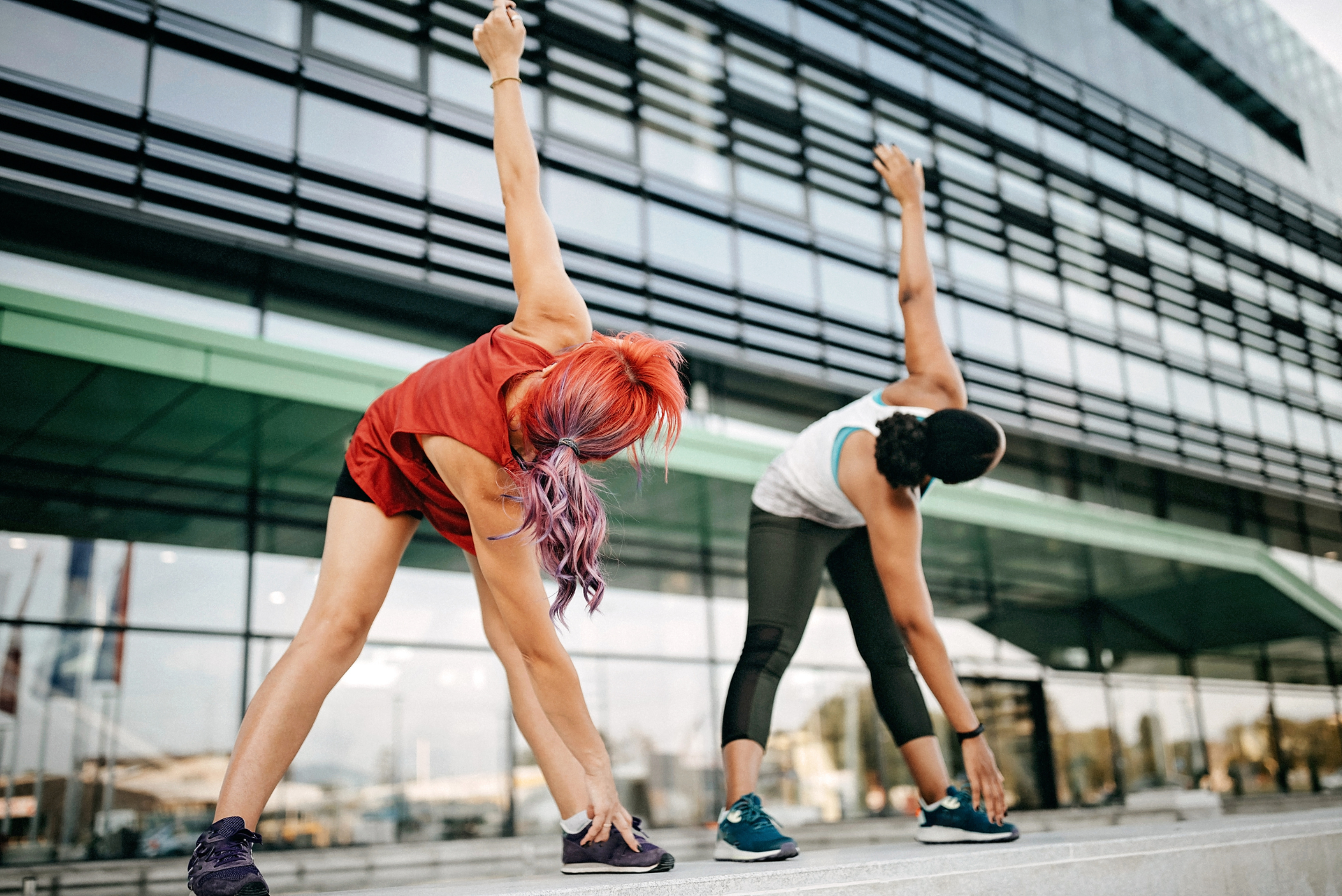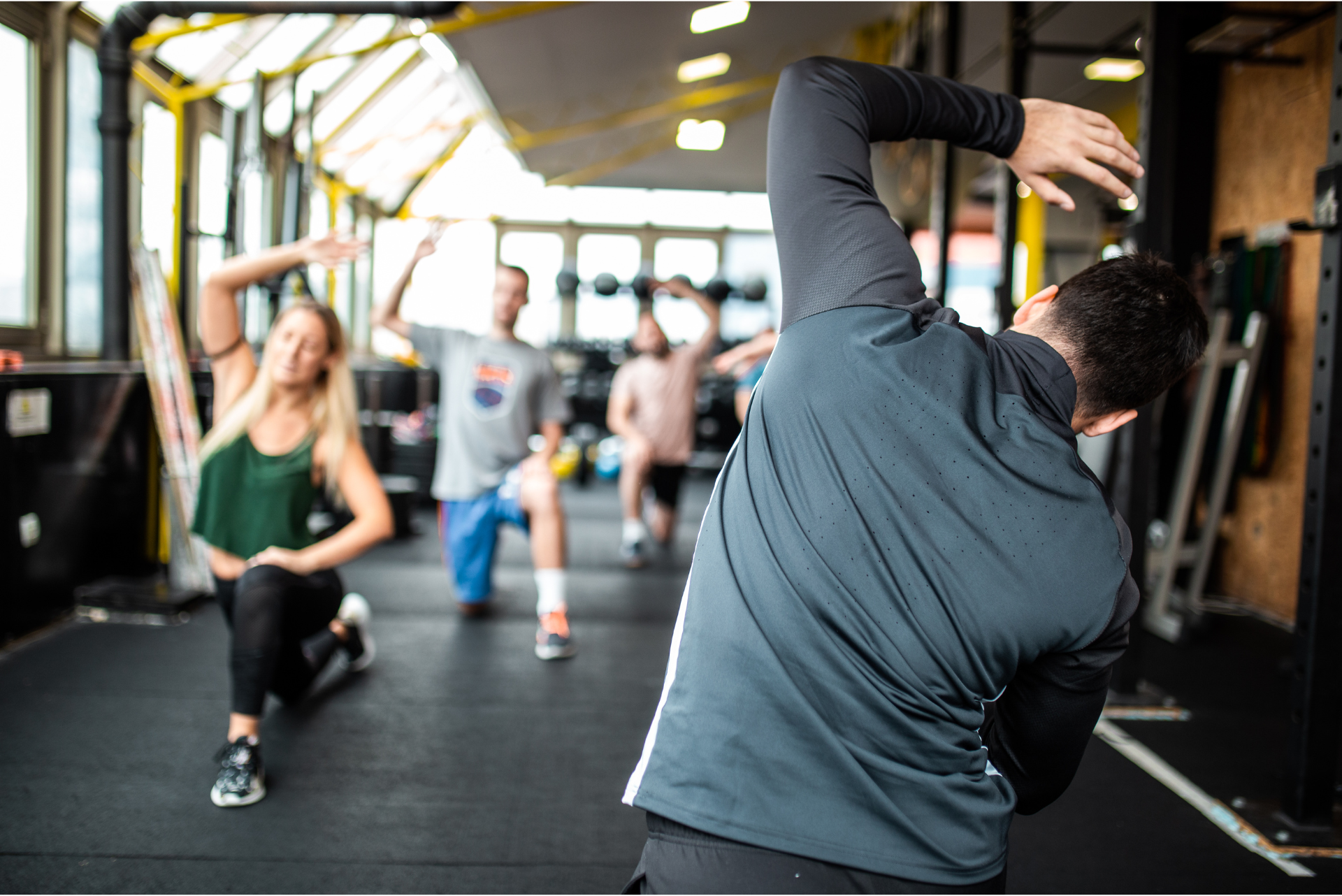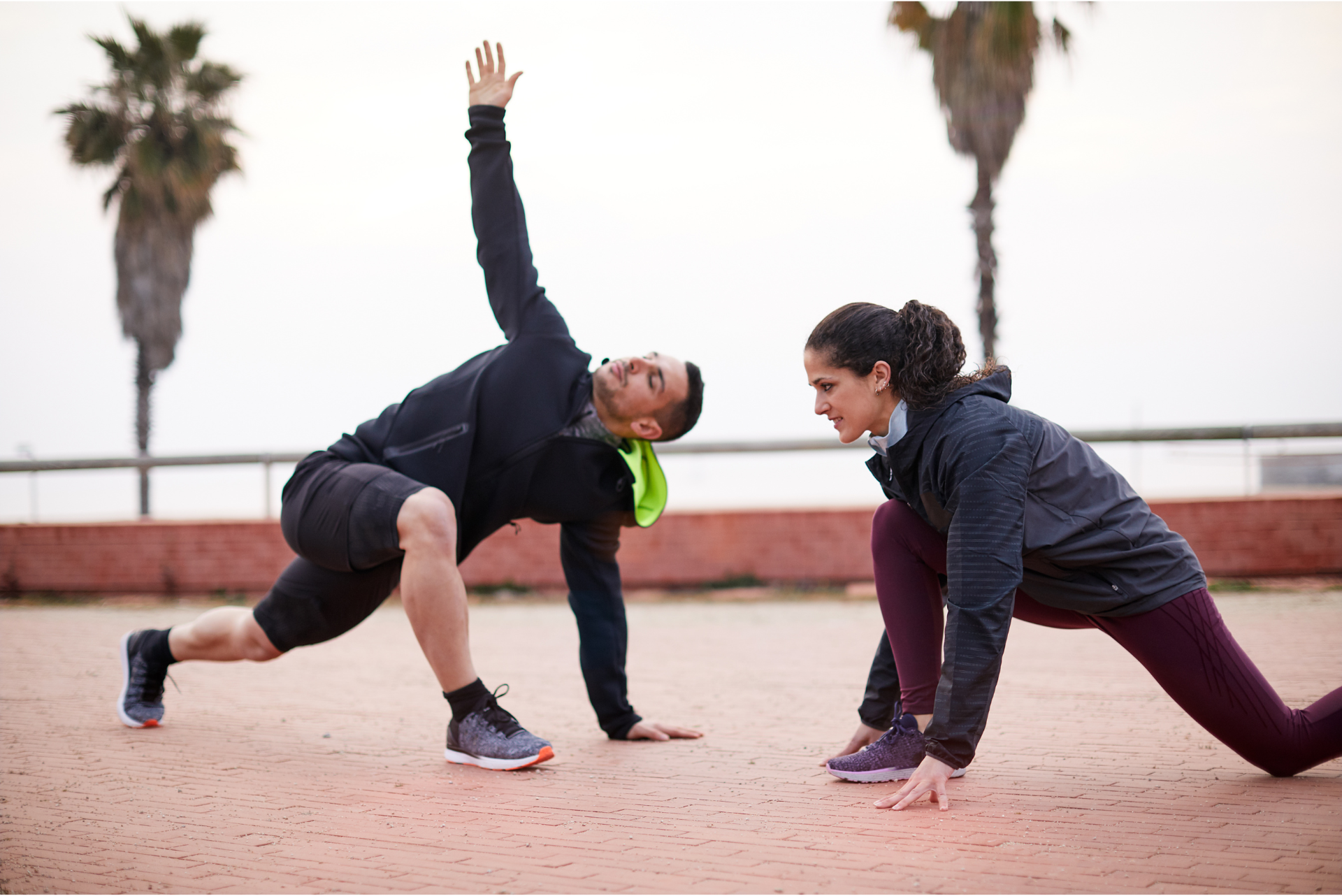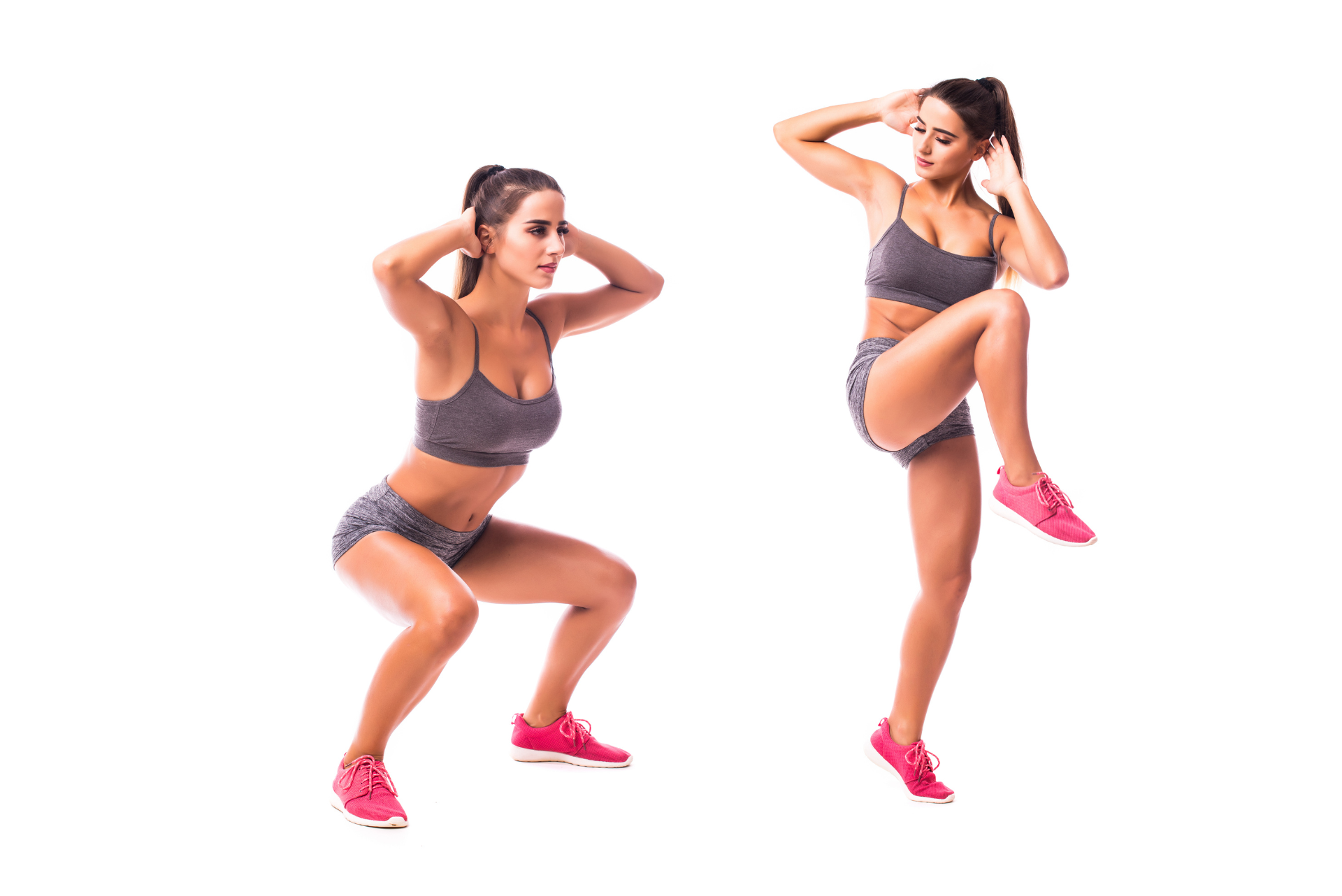What is Dynamic Stretching?

Dynamic stretches are an important part of a warm up that helps prepare you for more intense activity. It can be helpful to choose dynamic stretches that mimic the movement you will be doing in your work out or sport to prime the muscles and joints for those particular movements.
What is dynamic stretching?
Dynamic stretching is a general term for stretches that use movement to increase flexibility. It can be used in place of static stretching before activity, as part of a warm up before activity, and/or as part of a cool down after activity.
Why does dynamic stretching work?
A dynamic stretch routine, especially when used as a warm up, can be so beneficial because it is a form of exercise that involves moving your body through its full range of motion. Dynamic stretching can be done before you start a workout as a warm-up, or as part of an active recovery session to help improve flexibility and reduce muscle soreness.
This style of stretching and movement increases blood flow to your muscles. This helps to increase their temperature, which in turn causes them to relax more quickly after being stretched. This increased range of motion is why dynamic stretches are often used by people who have tight hamstrings or calf muscles, who may find themselves unable to fully straighten their leg during normal static stretches like the seated toe touch or roll down.
Dynamic stretching also helps you develop greater flexibility through improved muscle elasticity. When we move around regularly throughout the day--especially when we're active--our muscles become less stiff over time because they're constantly being stretched out from use; however if we sit still too much then those same muscles can lose some flexibility over time due to disuse. By doing regular dynamic movements throughout the day like walking up stairs instead of taking elevators or escalators, or adding some stretching into your day, this keeps our joints mobile enough so that they won't get stiff over time.

How to do dynamic stretching?
Dynamic stretching is really any form of active flexibility training and can be used to supplement your warm-up or cool down, or as part of your workout. This involves moving through a full range of motion at a slow speed while keeping constant tension on the muscle group being stretched. As mentioned, this helps improve blood flow, but also lubricate joints, increase range of motion and reduce muscle stiffness.
When this preparation is done before beginning any physical activity or sport it increases body temperature which helps prepare the muscles for activity by increasing their elasticity so they can absorb more force without injury when performing explosive movements like sprinting up hills during cross country practice or kicking field goals during football practice. When done after exercise, it allows the body time for recovery by reducing delayed onset muscle soreness (DOMS) by increasing blood flow throughout all tissues within 24 hours after exercise has stopped; therefore speeding up recovery times!

Examples of Dynamic Stretches
Dynamic stretches are usually done with large, repetitive movements that include each major muscle group.
Here is an example of a dynamic stretching routine:
Dynamic Stretch 1. Arm Circles (repeat)
Stand with your feet hip width apart, engage the abdominal muscles, arms extended and lift to a "T" shape shoulder height. Keep the elbows straight (but joint unlocked) begin to circle the arms around from the shoulder joint. This movement will help to activate the shoulder muscles.
Start with circles the size of small dessert plates then dinner plates, continue to increase size while keeping the core engaged and torso as still as possible. Reverse direction.
Dynamic Stretch 2. Leg Swings (repeat)
Come to a standing position and step the feet hip width apart, shift your weight to the left side and engage the abdominal muscles. Begin to swing the right leg back and forth, activating the the hip flexors as you swing forward and the glutes and hamstrings as you swing back.
Repeat on the opposite leg.
Dynamic Stretch 3. Walking Lunges with rotation (repeat)
Start with feet hip wight apart, fingertips to temple and take a big step forward with right leg. Drop right knee into a 90/90 lunge and rotate torso to the front left knee. Engage through the core as you rotate and try to keep the hips and feet facing forward.
Repeat, alternating from one side to the other as you "walk" forwards.
Dynamic Stretch 4. Runners Lunge with Reach (repeat)
Find an A-frame position. Step right foot outside of right hand coming into a lunge position. Lift right arm fingertips to ceiling, rotating spine and opening chest to knee. Step right foot back to A-frame position.
Repeat on opposite side, alternating from one to the other.
Dynamic Stretch 5. High Knees With Spinal Rotations (repeat)
Standing with feet shoulder width apart, fingertips to temple. Sit back into a squat position. Drive out os squat to stand and shift weight to right leg and lift left knee to hip height, rotate the torso drawing right elbow across the body to left knee. Lower left foot to floor and sit back into squat position.
Repeat. Alternating from one side to the other.
This kind of dynamic stretch routine can be done in many ways--just make sure you're moving your body through its full range of motion and not just bouncing from side-to-side or twisting at the waist without engaging other muscles!
Dynamic Stretching Benefits for Athletes
Dynamic stretching has been shown to improve sports performance because it increases the amplitude (range) of joint movement during exercise without adding excessive stress on muscles or tendons. Studies have also shown that dynamic stretching may be more effective than static stretching at reducing muscle soreness following intense workouts or competitions by increasing range-of-motion (ROM).

Dynamic stretching is an important part of a warm up that helps prepare you for activity..
Dynamic stretches help enhance performance by improving the speed at which muscles contract in response to stimulation from the nervous system.*
Dynamic stretching has been shown to increase power output by 12-20% during sprinting activities.*
Difference between dynamic and static stretches
Static stretching is often performed after dynamic stretches, as a cool down. A static stretch involves holding an extended position for 30 seconds or more, which increases blood flow to muscles and tendons while decreasing muscle spasms caused by overuse or injury. This can be done with static holds that lock joints into place such as arm crosses or bent knee kicks while sitting on floor with back against wall; or it can involve taking one leg out straight in front of you while keeping other leg bent at 90 degrees so both knees touch ground.

Dynamic stretching is an important part of a warm up that helps prepare you for activity.
As you go through each stretch below, remember to:
-
Move slowly through the entire range of motion (ROM). Do not bounce or force the stretch--move at a pace that allows you to feel the muscle being stretched without pain!
-
Keep breathing normally throughout each exercise; hold your breath only if it helps with maintaining good form in order not to strain yourself further than necessary!
The key to dynamic stretching is to be mindful of your body and the way it moves. You don't have to do anything crazy or complicated, just focus on your form and make sure that everything feels good before going into your workout. Dynamic stretching is also a great way to warm up before doing any kind of activity like working out or playing sports because it helps prepare muscles for movement by increasing blood flow through them so they are better able handle stress loads placed upon them during activity time!



